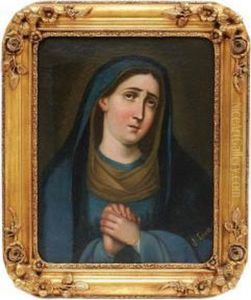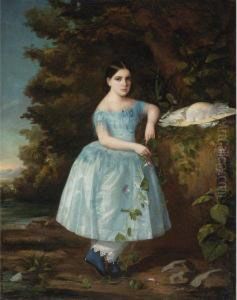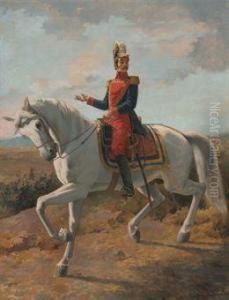Martin Tovar Y Tovar Paintings
Martin Tovar y Tovar was a prominent Venezuelan painter, born on February 10, 1827, in Caracas, Venezuela. He is regarded as one of the most important Venezuelan artists of the 19th century and is best known for his historical and portrait paintings. Tovar y Tovar grew up in a period of significant political and social upheaval, as Venezuela was in the throes of its struggle for independence from Spain.
Tovar y Tovar showed an early interest in the arts and was fortunate to receive formal training. He began his artistic education under the tutelage of the renowned Venezuelan painter Antonio José Landaeta. In 1847, he traveled to Paris to further his studies, where he was influenced by the works of European masters. This period was crucial in the development of his style, which combined the academic painting techniques of the time with a particular attention to Venezuelan themes and subjects.
Upon his return to Venezuela, Tovar y Tovar's reputation as an artist grew. He received numerous commissions, including the task of depicting significant events in Venezuela's history. His most famous works include the series of battle paintings commissioned by the Venezuelan government for the National Pantheon in Caracas. These works, such as 'The Battle of Carabobo' and 'The Battle of Junín', are celebrated for their dynamic composition and historical accuracy, and they remain iconic in Venezuelan visual culture.
In addition to his historical canvases, Tovar y Tovar was also a sought-after portraitist. He painted many portraits of Venezuelan elites and political figures, which were praised for their refined technique and psychological depth. His portraits are considered some of the best examples of Venezuelan portraiture from the 19th century.
Tovar y Tovar's legacy extends beyond his paintings. He played a significant role in the cultural life of Venezuela, contributing to the development of the fine arts in the country. He was instrumental in founding art institutions and promoting art education, thereby influencing subsequent generations of Venezuelan artists.
Martin Tovar y Tovar passed away on December 17, 1902, in Caracas. His body of work continues to be studied and admired, and his contributions to Venezuelan art are celebrated to this day. Tovar y Tovar's paintings can be seen in museums and galleries in Venezuela and are considered national treasures, reflecting the cultural and historical identity of the nation.


